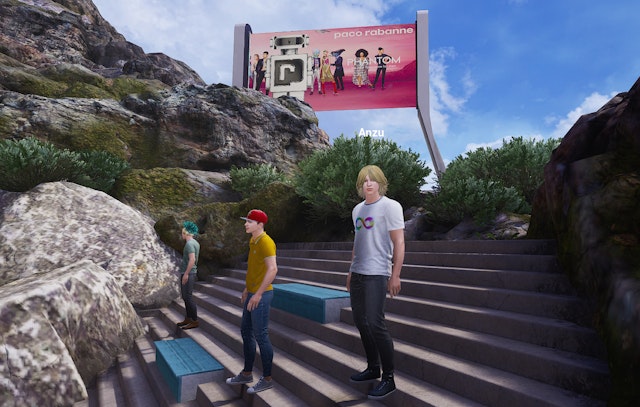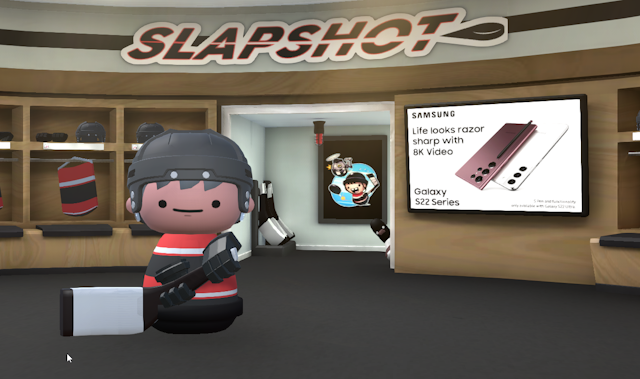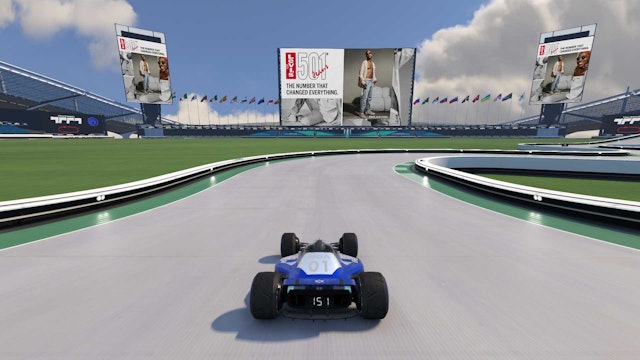Here’s everything advertisers need to know about in-game advertising today
Intrinsic in-game advertising is a growing and established ad channel, offering enormous reach, huge attention levels, and diverse audience targeting, according to Anzu's Jamie Farrage. For The Drum's AI to Web3 Deep Dive, Farrage discusses the possibilities of in-game ads for driving brand awareness and purchase intent, and the protection measures in place to safeguard ad spend.

Over the past few years, intrinsic in-game advertising has generated a lot of excitement and noise. However, understanding exactly what is possible via this advertising medium can often be overwhelming.
To clear things up and explain what is possible not tomorrow, not in five or ten years, but now, today, we have put together this short guide to help you understand where this medium is at and if you launched an in-game campaign today, how it would work and what is on offer to you.
Let’s begin with the basics.
What is an intrinsic in-game ad?
At their core, intrinsic in-game ads are ads that run in placements within virtual environments. When a developer decides to open their game to this type of advertising, they work with in-game adtech providers to determine what objects inside the gameplay can work as monetization items and build placements where ads would sit. Where they work best depends on the game, and it’s usually a completely different scenario for each title, as games are all very different.
Luckily, games can be grouped into different genres, and within these, ads typically will sit in similar in-game locations. For instance, in sports games where a pitch or court exists, the ad placements will likely be around the area where the sport is being played, in racing games along and over the top of the tracks, and in city simulations on buildings and the side of vehicles. You can think of these ads as digital out-of-home (DOOH) in games as these are non-clickable and appear within similar locations within games as to where you would find them in the real world.

What is possible today?
We are at a pivotal moment for in-game advertising, one that the industry has been working towards for a long time. With advancements in technology, shifts in mindsets, and a growing global audience of over 3 billion players, advertisers everywhere are now looking to in-game as an established ad channel that rivals and even trumps many other digital channels thanks to its enormous reach, huge attention levels, and the massive diversity of its audience.
Until recently, there was no unified way to measure viewability with in-game ads. It was done differently depending on who you worked with. At the end of last year, the MRC and IAB changed this by publishing the updated intrinsic in-game advertising guidelines. Amongst other things, these guidelines set the standards for viewable impressions, bringing the industry in line and, in turn, bringing more confidence to advertisers around their in-game ad buys.
In-game targeting now allows advertisers to hone in on their target audience like they can via other digital channels. This includes the use of contextual targeting, matching game titles to distinct audience types, and targeting with statistical demographic data, which uses location-based data to provide advertisers with targeting options related to areas like age group, gender, and family status.
Third-party tech vendors, including Oracle Moat, HUMAN, and IAS, are also working to protect in-game ad spend, making in-game impression delivery and IVT measurement available to advertisers. Although IVT is extremely low in-game due to the complex nature of the environment, the prevention tools are now there to safeguard the space because inevitably, where the ad dollars flow, the fraudsters will follow.

What opportunities does in-game present today?
In-game ads can drive every level of the marketing funnel, from brand awareness to purchase intent. As more brands move into the in-game space, seeing what is possible with this medium has been extremely exciting.
An example of a great top-of-the-funnel campaign we worked on recently came from Levi’s, which used in-game to reach a new generation of fashion enthusiasts. With their sights firmly set on 18-30s, Levi’s successfully connected with players by bringing ads of their 501 jeans into a number of premium PC and mobile games. The campaign saw a 4% increase in brand awareness for Levi’s, which is a considerable increase considering the brand is globally renowned. It also saw a 6% increase in brand consideration among 18-30s, and 64% of those exposed to the campaign took some sort of action, including visiting Levi’s website.

As gaming continues to grow in popularity and the technology that drives this advertising continues to mature, more and more brands from every vertical imaginable are turning to this medium to help them connect with hard-to-reach audiences. One of the current hurdles is that we are diving into a new world for brands. This means to successfully bring a campaign to this new environment, brands should look to providers who know the space inside out and can cut through the noise to explain what is possible.
Content by The Drum Network member:

Anzu
Anzu is the most advanced intrinsic in-game ad solution for mobile, PC, console, and the metaverse. Anzu’s in-game ads put players first and help advertisers reach...
Find out more
